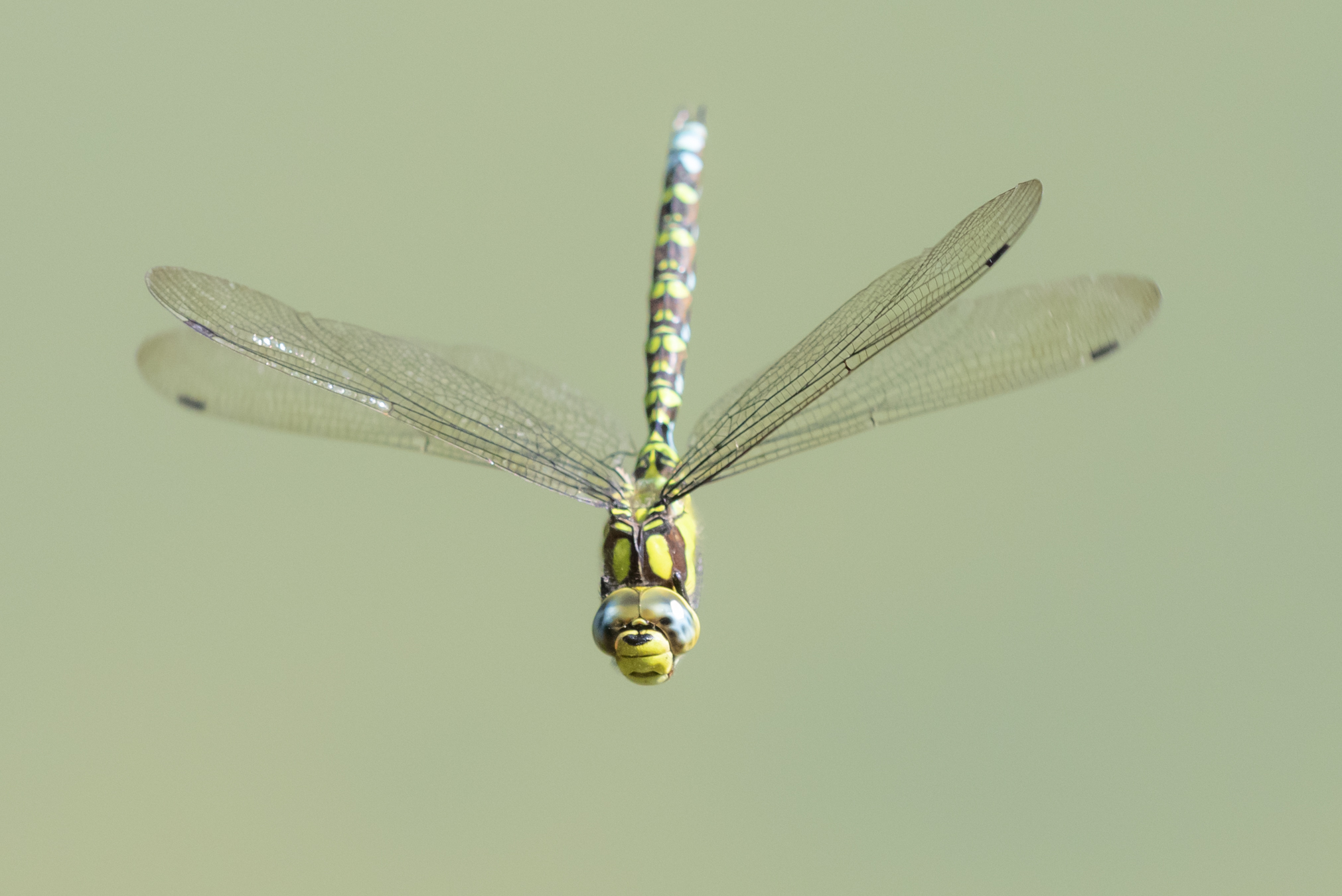Recently my friend and fellow osteopath Cathy Allan, based in Victoria, Australia, sent me some beautiful pictures of dragonflies that her father had painted. These pictures got me thinking about the practicalities of trying to photograph dragonflies in flight. This is not something that I have tried, not least because dragonflies fly ridiculously fast.
This Sunday afternoon I was sat by a pond at a friend’s farm where we were staying for the weekend. There were a few dragonflies about, including this nice male Common Darter.

Much larger was a male Southern Hawker, that kept coming over to check me out:

These are large, colorful dragonflies, with a body length of up to 8cm. I had my macro lens with me, so tried a few half-hearted attempts to get a picture of one as it flew past. In active flight, this was impossible. Even if I could get one in the viewfinder, it was gone before the camera could focus.
But these are inquisitive and territorial insects. Once every five minutes or so, a male would come patrolling to where I was sitting and hover for a few seconds before zipping off again. I wondered if those few seconds of stationary hovering would provide an opportunity for my camera to focus and take a burst of pictures. I also noticed that the male had a few special locations where he would frequently return and hover, when not chasing off other males or hawking at pretty much anything else that flew past.
My first attempts at sitting near one of these favoured areas did at least produce one of my first in-focus pictures of a dragonfly in flight, even though the male was not that close on this occasion:

Then, all of a sudden, he was back and much closer, actively investigating me.

Having tweaked the camera settings to get the shutter speed to at least 1/5000 of a second, I waited for the next return:

Much better! I was pleased that this flying insect was pretty much in focus, with even most of the wing motion frozen by the fast shutter speed. I realised I could clearly make out the incredible eyes that wrap around the huge mouthparts at the front of the head. Dragonflies are virtually deaf and have a poor sense of smell. The vast majority of the information about their surroundings comes from their eyes. Being able to fly very fast, requires superb vision and balance. Otherwise, it ends very badly.
With patience, I eventually got some good, close up, pictures in those few seconds of investigative hovering:

Being able to see such detail in the photographs made me want to understand what some of these structures were. Ray Cannon has published some excellent blog posts about dragonfly anatomy in general and dragonfly vision in particular. My first discovery was that dragonflies have at least five eyes: two obvious large compound eyes, that wrap around the side of the head, but also three simple eyes tucked in under the vertex, the ocelli. Common to many ancient insects, the ocelli have a role in keeping the insect orientated in space and level in flight. Combined with the two large compound eyes, the position of these five eyes gives dragonflies nearly a 360-degree visual field, they really can see what’s behind them!


A pleasing and educational hour by the pond with these amazing insects and thank you Cathy, for the inspiration!

Great pics just a small correction it’s a Southern Hawker rather than a Common Hawker. Hi -viz headlights, on thorax, complete blue tail-lights etc
Thanks Jeremy, amendments made! Any non-avian identifications in my blog posts should always be double-checked